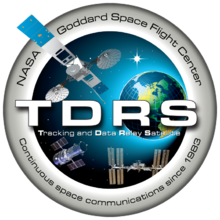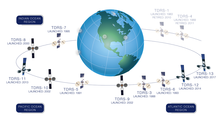
Back Tracking and Data Relay Satellite System German Tracking and Data Relay Satellite System Spanish سامانه ماهوارهای ردیابی و بازپخش دادهها Persian TDRSS Finnish Tracking and Data Relay Satellite System ID Tracking and Data Relay Satellite System Italian TDRS Japanese TDRSS Polish Tracking and Data Relay Satellite System Portuguese Tracking and data relay satellite system Russian



The U.S. Tracking and Data Relay Satellite System (TDRSS, pronounced "T-driss") is a network of American communications satellites (each called a tracking and data relay satellite, TDRS) and ground stations used by NASA for space communications. The system was designed to replace an existing network of ground stations that had supported all of NASA's crewed flight missions. The prime design goal was to increase the time spacecraft were in communication with the ground and improve the amount of data that could be transferred. Many Tracking and Data Relay Satellites were launched in the 1980s and 1990s with the Space Shuttle and made use of the Inertial Upper Stage, a two-stage solid rocket booster developed for the shuttle. Other TDRS were launched by Atlas IIa and Atlas V rockets.
The most recent generation of satellites provides ground reception rates of 6 Mbit/s in the S-band and 800 Mbit/s in the Ku- and Ka-bands. This is mainly used by the United States military.[1]
In 2022 NASA announced that it would gradually phase out the TDRS system and rely on commercial providers of communication satellite services.[2]
- ^ NASA Space Science Data Coordinated Archive
- ^ "Companies Vie to Build NASA's Next Communications Network - IEEE Spectrum". spectrum.ieee.org. Retrieved 2024-10-17.